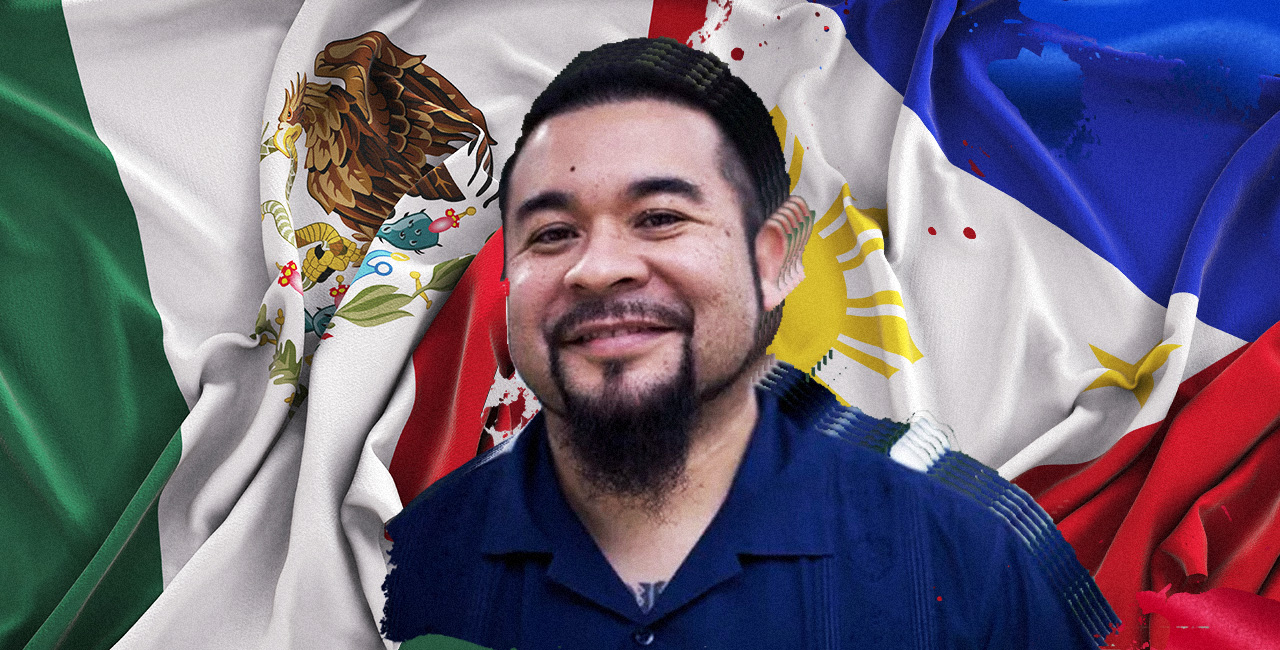The Mexipino Experience: Growing Up Mexican and Filipino in San DiegoPosted in Articles, Asian Diaspora, Autobiography, Latino Studies, Media Archive, United States on 2017-06-28 00:15Z by Steven |
The Mexipino Experience: Growing Up Mexican and Filipino in San Diego
Remezcla
2017-06-27
Rudy P. Guevarra Jr., Associate Professor of Asian Pacific American Studies
Arizona State University
 Author Rudy P. Guevarra Jr. Photo by Jimaya Gomez, Art by Alan López for Remezcla. |
Rudy P. Guevarra Jr. is the author of Becoming Mexipino: Multiethnic Identities and Communities in San Diego
Growing up in San Diego, I remember watching my abuelito tend the guava tree he grew for my mother, while singing along to the Mexican rancheras that blared from his tiny radio in the backyard. When my mother called him in for lunch, he’d start whistling, as Linda Ronstadt’s Canciones de mi Padre echoed from the house. We both knew that we’d be eating caldo de res con arroz Mexicano. Once a month, my Filipino grandfather, or tata, would also pay us visits from San Francisco. I’d help him and my mother cook Filipino delicacies, like chicken adobo, pansit, and lumpia. He’d have us in tears, laughing at his jokes, while the smell of soy sauce and vinegar permeated the entire house.
Many of our family functions centered on moments like these – eating Filipino food while listening to Mexican music, bathing ourselves in the experiences that were for me, the essence of being a Mexipino…
Read the entire article here.


